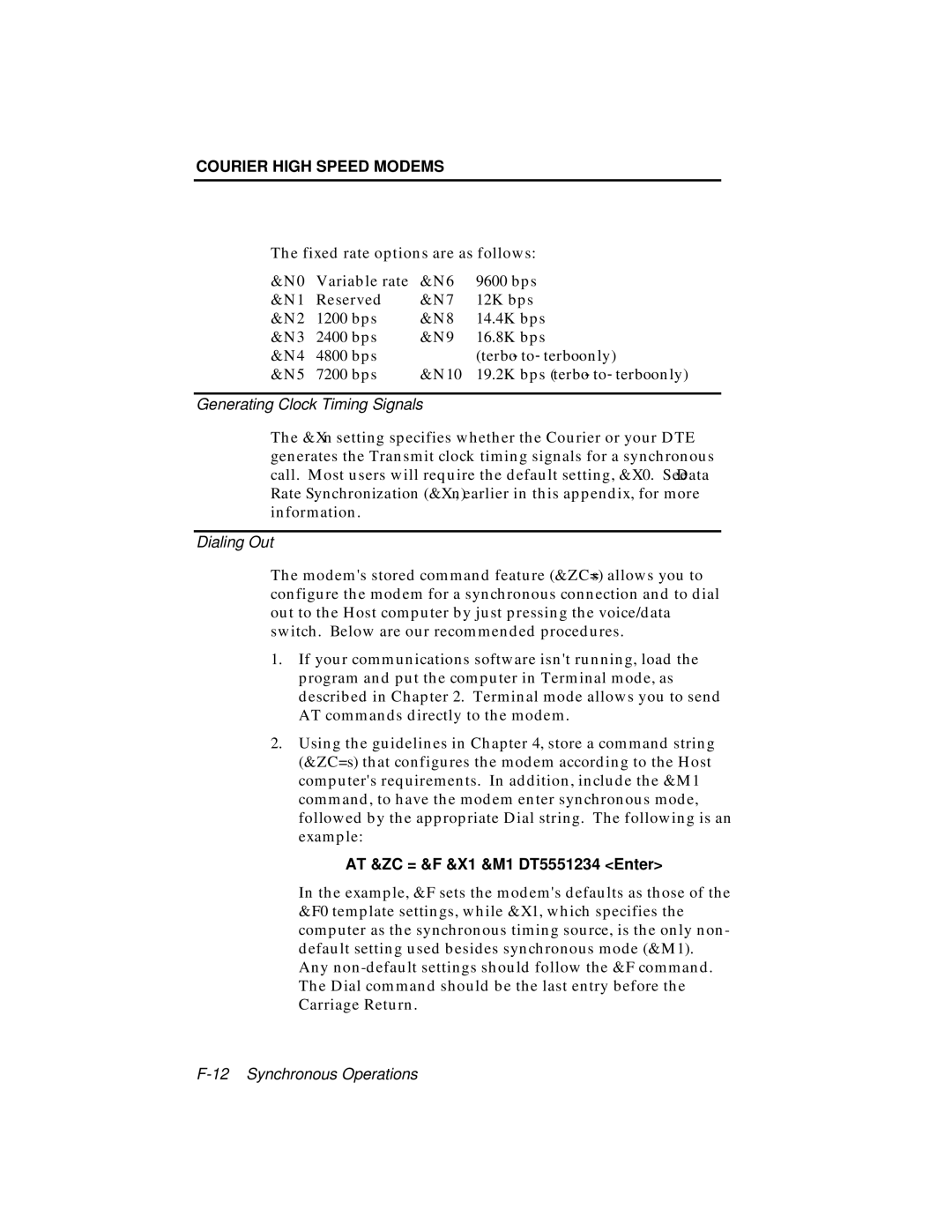
COURIER HIGH SPEED MODEMS
The fixed rate options are as follows:
&N0 | Variable rate | &N6 | 9600 bps |
&N1 | Reserved | &N7 | 12K bps |
&N2 | 1200 bps | &N8 | 14.4K bps |
&N3 | 2400 bps | &N9 | 16.8K bps |
&N4 | 4800 bps |
| (terbo−to−terbo only) |
&N5 | 7200 bps | &N10 | 19.2K bps (terbo−to−terbo only) |
Generating Clock Timing Signals
The &Xn setting specifies whether the Courier or your DTE generates the Transmit clock timing signals for a synchronous call. Most users will require the default setting, &X0. See Data Rate Synchronization (&Xn), earlier in this appendix, for more information.
Dialing Out
The modem's stored command feature (&ZC=s) allows you to configure the modem for a synchronous connection and to dial out to the Host computer by just pressing the voice/data switch. Below are our recommended procedures.
1.If your communications software isn't running, load the program and put the computer in Terminal mode, as described in Chapter 2. Terminal mode allows you to send AT commands directly to the modem.
2.Using the guidelines in Chapter 4, store a command string (&ZC=s) that configures the modem according to the Host computer's requirements. In addition, include the &M1 command, to have the modem enter synchronous mode, followed by the appropriate Dial string. The following is an example:
AT &ZC = &F &X1 &M1 DT5551234 <Enter>
In the example, &F sets the modem's defaults as those of the &F0 template settings, while &X1, which specifies the computer as the synchronous timing source, is the only non- default setting used besides synchronous mode (&M1). Any
